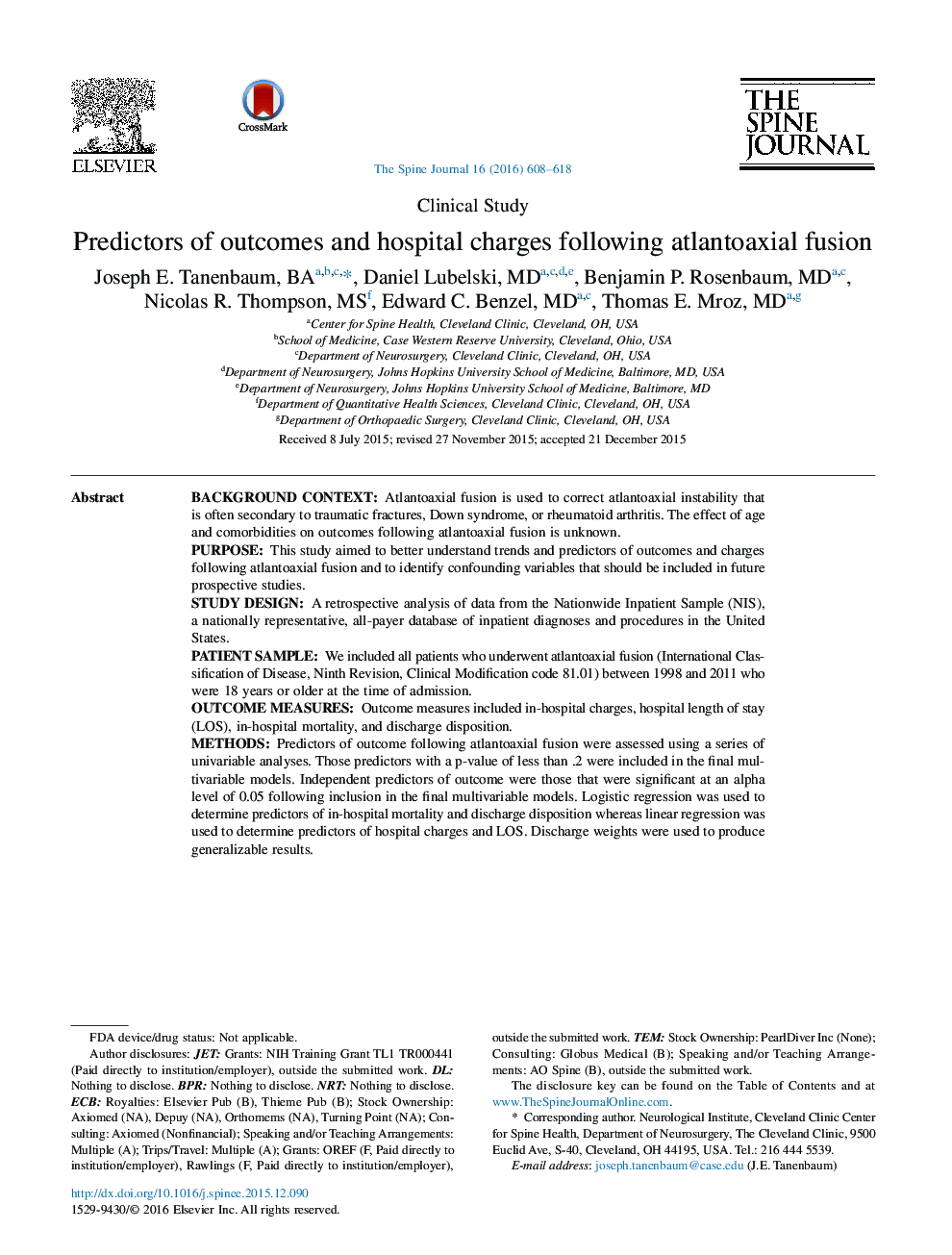| کد مقاله | کد نشریه | سال انتشار | مقاله انگلیسی | نسخه تمام متن |
|---|---|---|---|---|
| 4096118 | 1268552 | 2016 | 11 صفحه PDF | دانلود رایگان |
Background contextAtlantoaxial fusion is used to correct atlantoaxial instability that is often secondary to traumatic fractures, Down syndrome, or rheumatoid arthritis. The effect of age and comorbidities on outcomes following atlantoaxial fusion is unknown.PurposeThis study aimed to better understand trends and predictors of outcomes and charges following atlantoaxial fusion and to identify confounding variables that should be included in future prospective studies.Study designA retrospective analysis of data from the Nationwide Inpatient Sample (NIS), a nationally representative, all-payer database of inpatient diagnoses and procedures in the United States.Patient sampleWe included all patients who underwent atlantoaxial fusion (International Classification of Disease, Ninth Revision, Clinical Modification code 81.01) between 1998 and 2011 who were 18 years or older at the time of admission.Outcome measuresOutcome measures included in-hospital charges, hospital length of stay (LOS), in-hospital mortality, and discharge disposition.MethodsPredictors of outcome following atlantoaxial fusion were assessed using a series of univariable analyses. Those predictors with a p-value of less than .2 were included in the final multivariable models. Independent predictors of outcome were those that were significant at an alpha level of 0.05 following inclusion in the final multivariable models. Logistic regression was used to determine predictors of in-hospital mortality and discharge disposition whereas linear regression was used to determine predictors of hospital charges and LOS. Discharge weights were used to produce generalizable results.ResultsFrom 1998 to 2011, there were 8,914 hospitalizations recorded wherein atlantoaxial fusion was performed during the inpatient hospital stay. Of these hospitalizations, 8,189 (91.9%) met inclusion criteria. Of the study sample, 62% was white, and the majority of patients were either insured by Medicare (47.2%) or had private health insurance (35.6%). The most common comorbidity as defined by the NIS and the Elixhauser comorbidity index was hypertension (43.2%). The in-hospital mortality rate for the study population was 2.7%, and the median LOS was 6.0 days. The median total charge (inflation adjusted) per hospitalization was $73,561. Of the patients, 48.9% were discharged to home. Significant predictors of in-hospital mortality included increased age, emergent or urgent admissions, weekend admissions, congestive heart failure, coagulopathy, depression, electrolyte disorder, metastatic cancer, neurologic disorder, paralysis, and non-bleeding peptic ulcer. Many of these variables were also found to be predictors of LOS, hospital charges, and discharge disposition.ConclusionThis study found that older patients and those with greater comorbidity burden had greater odds of postoperative mortality and were being discharged to another care facility, had longer hospital LOS, and incurred greater hospital charges following atlantoaxial fusion.
Journal: The Spine Journal - Volume 16, Issue 5, May 2016, Pages 608–618
